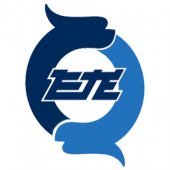-
Welcome to Auto Parts Forum
Whether you are a veteran automotive parts guru or just someone looking for some quick auto parts advice, register today and start a new topic in our forum. Registration is free and you can even sign up with social network platforms such as Facebook, X, and LinkedIn.
Brief analysis of automobile common materials
-
Similar Topics
-
By 袁春凤 (Tiffany)
The phenomenon that two objects move relative to each other to produce motion resistance between their contact surfaces is called friction, which is called friction. The existence of friction not only increases the power consumption, but also causes the wear of parts' contact surfaces. Therefore, lubricating oil is usually used between the relative moving surfaces of automobile parts to reduce friction. Failure of automotive parts 75% is caused by friction.
Friction can be divided into dry friction, liquid friction, boundary friction and mixed friction according to the lubrication state of the parts.
(1) dry friction
The friction between the frictional surfaces without any lubricating medium is called dry friction.
When the parts are in the state of dry friction, the surface of the parts is abraded sharply, so the surface of the moving parts of the automobile should avoid the occurrence of dry friction as far as possible.
Dry friction and boundary friction are the main friction between the upper part of cylinder wall and piston ring. Dry friction will occur when the journal and bearing are subjected to impact load in the working process.
(2) liquid friction
Two the friction of the friction surface when the lubricant is completely separated is called liquid friction.
In liquid friction, the two friction surfaces are completely separated by a layer of lubricating oil film with a thickness of 1.5-2.0um, which avoids direct contact between the working surfaces of the two parts. Friction only occurs between the lubricating fluid molecules, so the friction resistance is very small, and the wear of the parts is very slight.
Most of the relative motion parts of a car are carried out under the condition of liquid friction (for example, crankshaft and bearing).
(3) boundary friction
Two friction surface separated by a very thin boundary film is called boundary friction.
The oil film thickness is usually below 0.1um. Friction only occurs between the outer molecules of the boundary film, reducing the friction and wear of the parts. But its thickness is very small, and it is easy to be destroyed by impact and high temperature, so it is not as reliable as liquid friction.
For example: between cylinder wall and piston ring; if the work crankshaft and journal between the insufficient supply of lubricant, easy to produce boundary friction.
(4) Mixed friction
The friction between two friction surfaces in the presence of dry friction, liquid friction and boundary friction is called mixed friction.
In the actual working state, the parts usually work under the mixed friction state, and the friction state varies with the working conditions.
-



Recommended Posts
Join the conversation
You can post now and register later. If you have an account, sign in now to post with your account.
Note: Your post will require moderator approval before it will be visible.